Carriers are moving beyond being simply consumers of new aircraft: through venture-capital or innovation arms, some are backing development of the sustainable technologies vital for zero-emission flight.
Despite their geographical and operational differences, US carriers United Airlines and JetBlue Airways, Norwegian regional airline Wideroe, and Spain’s Air Nostrum have a common goal: to be pioneers in sustainability, be it zero-emission aircraft, sustainable aviation fuels, or other green technologies. The difference between them and a host of others that lay claim to environmental leadership credentials is the way they are going about it.
The airlines operate corporate venture capital funds such as United Airlines Ventures (UAV) and JetBlue Technology Ventures (JTV), new subsidiaries such as Wideroe Zero, or in-house innovation teams as at Air Nostrum. Each organisation has created a structure designed to allow them the freedom to innovate on a “multi-decade” horizon unencumbered by the day-to-day demands of running an airline.

At the mega-airline end of the scale is United. In June 2021 it launched UAV, a corporate venture fund with an initial budget of $200 million. It is led by president Michael Leskinen, who arrived at the airline five years ago after a 20-year career in the investment world.
GROWTH POTENTIAL
UAV was created after United had signed six major investment and collaboration deals in the first half of last year – including an agreement to acquire Archer Aviation’s four-seat electric vertical take-off and landing (eVTOL) aircraft, since named the “Maker”. Through UAV, United will invest in small to medium-sized companies developing emerging technologies and sustainable solutions and with strong potential to grow.
Leskinen, who had been vice-president of corporate development and investor relations at the carrier since April 2019, recognises how tricky it can be to find the right innovation pathways. “You get into these big companies and there are lots of conflicting interests,” he says. “There is a general conservatism to a firm of this size. Companies across industries find that when they want to shake things up and create that extra level of innovation a very useful tool to do that is a corporate venture capital [CVC] fund. That is the idea behind it, and we have already had some early successes, so at this point it’s a proven model.”
Obtaining top-level support is critical, and Leskinen has that at UAV. “You need the connection with the senior leadership. We have a board of directors that consists of Scott Kirby, our chief executive, Gerry Laderman, our chief financial officer, Linda Jojo, our chief customer officer, and Brett Hart, our president. [We deal with] all of them – and sometimes when you are driving innovation there are some conflicting points of view, which is healthy. My subsidiary reports to that board – it gives us a lot of autonomy to try new things.”
INNOVATIVE SPIRIT
JetBlue took the plunge in creating a corporate venture fund in 2016, explains Amy Burr, who became president of JTV in mid-2021. “Back in 2015 our board of directors recognised that a 15-year-old JetBlue was losing its innovative spirit,” she says. “It is hard to maintain that drive to try new things and explore emerging tech when you are operating an airline.”
And while there are various ways of structuring a new approach to innovation, JetBlue “chose to do the CVC model because we thought the nice thing about this is it separates us from our day-to-day operational requirements”, Burr says. “Our job every day is to seek out what is happening with emerging tech, what is changing in our industry, how can we take advantage of some of those start-ups that are building new and different ways of doing business. Because we are separated from the airline, it gives us the ability to dive in and not get distracted every time the website goes down, or [the reservation system] has an issue, or whatever it might be.”
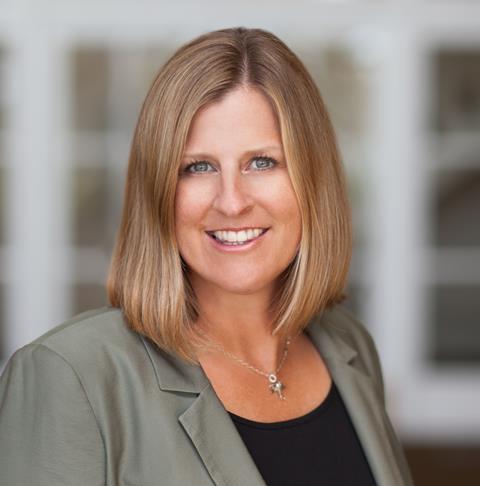
Since the start, sustainability has been one of JTV’s five investment pillars, initially focused on evolving regional travel and autonomous electric aircraft. For example, it invested in eVTOL start-up Joby Aviation in 2017 “before anyone thought about air taxis”, says Burr.
This approach has since been adapted. “A couple of years ago we realised the sustainability tack is well beyond just regional travel and well beyond the electrification movement within airlines, so we expanded it to all sustainability tacks.”
Wideroe, meanwhile, realised in 2017 that sustainability would become a critical business transition challenge for the airline. To aid its learning about the aircraft and technologies that were on the horizon, it started Project Zero in 2018 – established within the airline and with a grant from state enterprise Innovation Norway.
“The aim was to really understand what is out there and to find partners to work with,” explains Andreas Kollbye Aks, head of strategy at Wideroe. “During this process we entered a collaboration with Rolls-Royce” focused on electric aircraft technology.
Work between the partners intensified during the pandemic, leading the carrier to expand the project. “One important reason is that when we started this back in 2017, we said to look at electrification is natural and a perfect fit for Wideroe. We thought we can easily introduce these aircraft when they come into our network.”
Aks, who led the team that introduced the Embraer 190-E2 into Wideroe’s fleet, admits this initial view was somewhat naive. The recipe for introducing a current-generation jetliner into an airline for the first time is well used and trusted. Working with R-R provided an understanding that introducing an electric-powered aircraft “is on a deeper level of change”, he explains. “This is new technology – you are very far from being able to copy and paste existing processes and procedures.
“For that specific reason we decided we needed to build a competent team that is willing to really digest this and understand it fully,” Aks says. This team could have been stood up within the airline, but the technology was so novel that Wideroe decided to create a new company: Wideroe Zero was formed in October 2021, with Aks becoming its first chief executive.
RETHINKING BUSINESS
“We also learnt in this process that these new technologies have a lot of opportunities but also many constraints, and you may have to be willing to adapt your business model and rethink the way you do things,” he says. “Then it may be more challenging to do it within the existing company.”
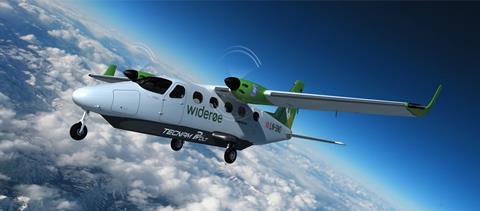
Air Nostrum has been taking a lead on environmental management for years, having appointed a chief sustainability officer four years ago, and beginning its search for a zero-emission successor for 50- to 100-seat turboprops and regional jets to serve its short-haul routes back in the mid-2010s, says Miguel Angel Falcon, managing director at the carrier and the vice-president who heads up its environmental and aircraft planning groups.
In 2014, a zero-emission aircraft seemed a long way off as the company first pondered fleet replacement options. Although it was of a decent size in the regional world, with a fleet of 40 aircraft, management chose to keep its work to introduce a new sustainable aircraft in-house. “Because of our size, it is preferable to get everybody in the act rather than having a separate unit running the whole show,” Falcon says.
Until recently, there were no alternatives to seriously consider – but that is changing. “We started looking at more alternative aircraft that could meet these challenges and HAV [Hybrid Air Vehicles] was one of them,” Falcon says. HAV is a UK-based firm developing the Airlander aircraft, which at first glance looks like an airship. The company describes Airlander as “a hybrid aircraft that derives its lift from a combination of aerodynamic lift (like an aeroplane), lifting gases (like an airship) and vectored thrust (similar to a helicopter)”.
“It was disruptive in the respect it was a blank sheet of paper design, nothing that resembled a turboprop or a regional jet, and that’s what caught our eye,” Falcon says. In June, Air Nostrum placed 10 reservations on the 100-seat Airlander 10 for delivery from 2026, with the intention of being the launch operator.
The carrier has been engaging with HAV on the aircraft for several years. In addition, two years ago it began working with US-based Universal Hydrogen on its hydrogen fuel retrofit kit for its ATR turboprops, and in March 2021 joined forces with Spanish firm Dante Aeronautical to help develop an electric aircraft in the 19-seat class.
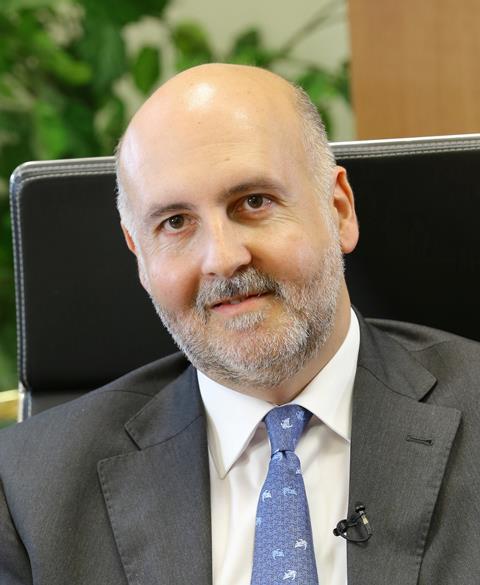
In his team, Falcon has a group of five people focused on novel technologies. “We like to be involved in as many as possible to understand what’s going on and we would like to be able to test the validity of each proposal – and we are not afraid of working with many parties,” he says. “We are open to any option that has a certain credibility because, ultimately, this is going to be a combination of solutions.”
DECARBONISATION IMPERATIVE
Whichever innovation structure they have adopted, each of the four carriers is convinced that their future business success requires early answers in sustainability technology. And this means investing time and money now to be ahead of the game. “Decarbonising air travel is absolutely an imperative. It is a table stakes item for our industry and United Airlines – and we are out in the lead in making investments that can achieve that,” Leskinen says.
Choosing where to place bets and the level of risk to take is Leskinen’s job, and he notes “this is not my first rodeo” when it comes to making investment decisions. “We have technologies that are going to make an impact in the short term and we are investing in technologies that are going to change the world in the long term,” he says.
“We have a pipeline of start-ups that is over 300 companies deep right now. We have innovation in three verticals – aerospace, climate and decarbonisation, and technological investments,” Leskinen explains. There is an executive leading each vertical with a team under them – and each one is expected to complete three to four deals per year.
UAV has its $200 million pot, but funds from its investments are recycled, and some good early bets have made returns. “As we make investments and those are successful, and we harvest those gains, we get to reinvest, so this will give us the funds to invest for the foreseeable future. I think by the time we get a few years down the pipe we are going be a billion-dollar fund,” Leskinen says.
That is encouraging, but there is more to it than that. “More critically we are not just BlackRock or Fidelity or another investing fund. We have expertise in this industry that most investors do not, with our test pilot group, with our environmental team with all the operational executives here running the airline – and so when we make investments you see many follow in making additional investments. A $10 million or $20 million investment from United can lead to a $100 million investment round for that company. We use our reputation and our brand to help these companies raise the capital they need to drive their technology.”
At Wideroe Zero, Aks wants the team he is gathering to act with the freedom to innovate with technology and business models, without the need for a return on investment at this time, recognising that the introduction of both will attract competitors. Learning about the emerging technologies is critical on one hand, but equally important is the way businesses will evolve to profit from them.
DIRECT CAPTURE
“Somebody else will do this. I am very focused on giving this group of people in Wideroe Zero the freedom to think on an equal footing with a start-up,” he says. “What the industry needs is a think-tank focused on the business modelling of this. We need to really understand how we are going to do this in the future, and we have a huge benefit of being closed-linked to an existing airline. We can get the experience and the data that airlines have, so we have access to a lot of important knowledge that can be difficult for start-ups.”
One of the toughest challenges in the sustainability arena is that everybody wants to make progress on decarbonisation now, but the technology is not ready. Burr agrees the horizon for sustainability investments is longer. For example, JTV is interested in direct air capture technology being used to manufacture sustainable aviation fuel. “These are the kinds of things that will come to maturity in the seven- to 10-year range, even 15 years, so we are putting money against these types of technologies to help JetBlue in the future,” she adds.
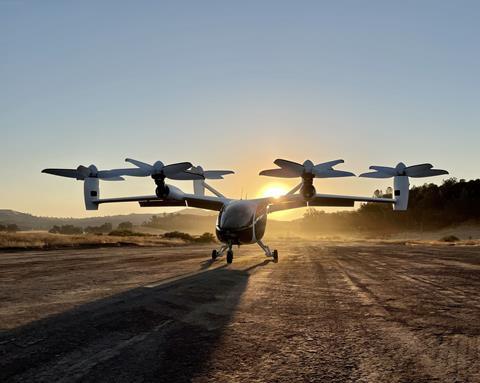
And while investments will be strategic and have financial growth and exit plans attached to them, there is a recognition that not everything will work. “Venture capital is risky,” says Burr.
“We are putting money into start-ups. Some will fail but we do accept a certain amount of risk. However, we think we have a great, skilled team who thinks about what the right company is [to back] in each of these spaces.”
Leskinen has the same view. “If I didn’t pursue investments that were going to fail with some frequency, 75% of what we do I wouldn’t do,” he says. “But when those companies succeed, I make five, 10, 50 times our money and so when you aggregate that in a portfolio, we should be delivering 25% returns for United Holdings while at the same time we drive innovation.”
This is also a time when joint innovation efforts between like-minded airlines can bring benefits. This is the approach Wideroe Zero is interested in taking, and it has held discussions with Air New Zealand, which has similar challenges, Aks says.
The priority is decarbonising air travel, not just seeking competitive advantage. “If you are not a direct competitor of us, join us,” Leskinen says. “And in some cases, even if you are a direct competitor, we welcome this [opportunity].”
For instance, UAV has invested in ZeroAvia, which is a start-up developing hydrogen-electric aircraft propulsion systems. ZeroAvia’s chief executive, Val Miftakhov, was worried about UAV wanting exclusivity on its products, Leskinen explains, but the fund takes the opposite view, going against the grain of the venture-capital industry.
“I said: I am investing in your company because we want to change air travel and I’m going to be your salesman,” Leskinen says.
“I want American Airlines to buy. We want to make sure we get paid and have some benefit from our early involvement, but we want our portfolio companies to sell to everyone.”
Indeed, in addition to UAV, ZeroAvia now counts American, Alaska Airlines and British Airways among its investors.
How airlines’ technology investments could inflate business success
Airlines have differing priorities when it comes to sustainability investment and focus. However, for many, such as Spain’s Air Nostrum, the introduction of an aircraft with novel propulsion, to carry nine, 19, or more passengers while emitting zero carbon dioxide is of prime importance.
This explains why it has committed to the 100-seat Airlander 10 from Hybrid Air Vehicles. “It opens lots of possibilities,” says managing director Miguel Angel Falcon, who heads up Air Nostrum’s environmental and aircraft planning groups, and likes the versatility the aircraft offers. “It doesn’t require an airfield, making it almost like a helicopter. In that respect, you have a 100-seat helicopter performance which could operate in many destinations where we are not flying today.”
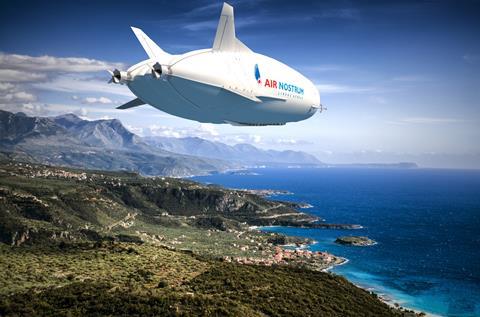
The idea of operating to smaller cities the carrier cannot serve with conventional turboprops with a more fuel-efficient and environmentally-friendly aircraft is very economically attractive, Falcon says.
Wideroe Zero will learn about zero-emission aircraft operations from its partnership with Tecnam on the nine-seat P-Volt, while a mainline regional type of 40 to 70 seats is of paramount importance to replace its current turboprop fleet from 2030 onwards, says chief executive Andreas Kollbye Aks.
The Norwegian company is also examining the potential role for four- to eight-seat electric vertical take-off and landing (eVTOL) aircraft in its fleet via a collaboration with Embraer spin-out Eve.
“Perhaps these aircraft could expand our network, although I see them more as an alternative to existing helicopter operations that can be used on our rural network,” Aks says. The key issues are ensuring low operating costs combined with high utilisation, and finding a price point that the average Norwegian will pay, he says.
SUSTAINABLE GAP
JetBlue Technology Ventures (JTV) also made an early play in the eVTOL field with its investment in Joby Aviation. In total it has five investments in sustainability-related start-ups, with three more in play, says Amy Burr, president of JTV.
The portfolio includes Air Company, a New York-based start-up with technology that imitates photosynthesis by taking captured carbon dioxide and converting it into impurity-free alcohols with oxygen and water as the only by-products. One day this technology could be applicable to producing aviation fuels.
A gap in the portfolio is a dedicated sustainable aviation fuel (SAF) company. “We are looking at what could be the next generation of SAF technology that is tackling it a little differently and we have a couple of companies in our pipeline,” Burr says.
United Airlines Ventures (UAV) has been one of the most active investors, backing SAF manufacturers, firms with carbon capture technology, eVTOL maker Archer Aviation, and start-ups ZeroAvia and Universal Hydrogen, who are both developing hydrogen-powered propulsion systems.
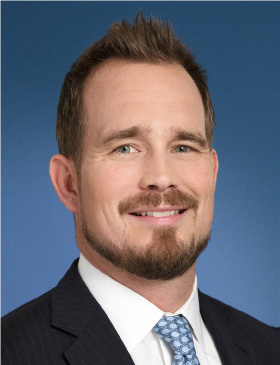
On SAF, “the right approach is to invest in technology that is going broaden the feedstock that we can utilise to produce fuel”, explains UAV president Mike Leskinen. “We are looking at technologies that would increase feedstock using other organics like algae.”
In September 2021, UAV, along with Honeywell, invested in Alder Fuels, a “cleantech” company developing technology to produce SAF by converting biomass, such as forest and crop waste.
“There are also power-to-liquid [PtL] technologies and in alcohol-to-jet there are a number of pathways there that potentially make sense,” Leskinen believes, with the latter a “here and now” opportunity. SAF made via the PtL route looks promising, but “it is 10 years-plus out, so we will be very thoughtful on investing in PtL where they have the right path and the right plan.”
Another novel technology that has caught Leskinen’s eye is genetic CRISPR technology and UAV is “pursuing pathways there”. This is where plants are genetically modified to “yield the products you want them to yield” – in this instance, biomass that will be better for making SAF.























